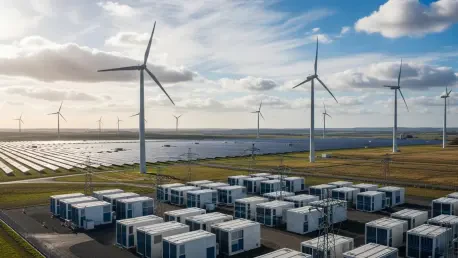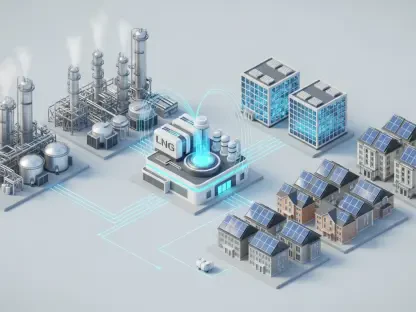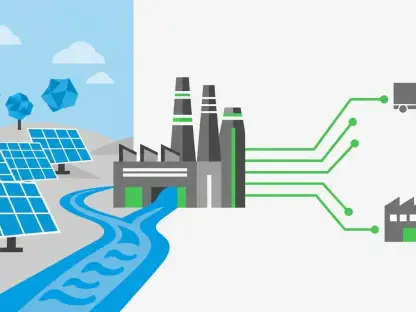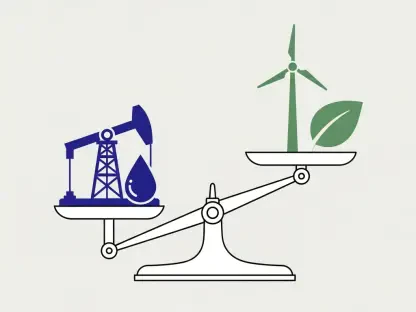Welcome to an insightful conversation with Christopher Hailstone, a renowned expert in energy management, renewable energy, and electricity delivery. With his extensive background in grid reliability and security, Christopher offers a unique perspective on the critical role of battery energy storage systems (BESS) in combating climate change. In this interview, we explore the necessity of energy storage for renewable energy adoption, the evolving technology behind BESS, the balance between risks and benefits, and the broader implications for communities striving to transition away from fossil fuels. Join us as we dive into these pressing topics with a focus on actionable insights and forward-thinking solutions.
Can you share what motivates your passion for renewable energy and energy storage systems, and how your expertise has shaped your perspective on their importance?
My passion for renewable energy and storage systems stems from a deep-rooted belief that we have a responsibility to address climate change through sustainable solutions. Over the years, working in energy management and grid reliability, I’ve seen firsthand how the intermittency of renewables like solar and wind creates a real challenge for consistent power delivery. This experience has convinced me that energy storage isn’t just a nice-to-have—it’s a cornerstone of a clean energy future. My work with utilities has also shown me the complexities of balancing safety, cost, and environmental impact, which shapes my view that we must act decisively while managing risks thoughtfully.
Why do you believe energy storage is not just helpful but essential for the success of renewable energy sources like solar and wind?
Renewable energy sources like solar and wind are inherently intermittent—solar panels only generate power when the sun is shining, and wind turbines depend on favorable wind conditions. Without storage, we can’t capture excess energy produced during peak times to use when generation drops. Energy storage systems, particularly BESS, act as a buffer, ensuring a steady supply of power to the grid. If we don’t have adequate storage, we risk relying on fossil fuel backups to fill the gaps, which undermines the whole point of transitioning to renewables and slows our progress toward carbon neutrality.
When it comes to large-scale energy storage, what are the key advantages and drawbacks of battery systems compared to alternatives like pumped storage hydropower?
Battery energy storage systems offer incredible flexibility—they can be deployed almost anywhere, scaled to fit specific needs, and respond almost instantly to grid demands. However, they come with challenges like higher upfront costs and concerns about safety, such as fire risks. Pumped storage hydropower, on the other hand, is a proven technology with massive capacity and long-term reliability, but it’s geographically limited to areas with suitable topography and can have significant environmental impacts on local ecosystems. While pumped storage remains a powerhouse, BESS is gaining traction because of its versatility and the rapid pace of technological improvement.
There’s been some criticism that lithium-ion battery technology isn’t mature enough for widespread use. How would you address this concern?
I understand the skepticism, but the reality is that lithium-ion batteries are already powering millions of electric vehicles and thousands of BESS installations worldwide with a strong track record. From grid-scale projects in California to backup systems in remote areas, they’ve proven their reliability. The technology isn’t perfect—issues like cost and safety need ongoing attention—but waiting for a ‘perfect’ solution ignores the urgency of the climate crisis. We’re seeing continuous improvements in battery chemistry and design, which makes me confident that lithium-ion is not just ready but essential for our current needs.
Fire incidents with BESS have raised alarms for some communities. Can you explain why you think these risks might be overstated, and how they compare to other everyday hazards?
While BESS fire incidents grab headlines with dramatic imagery, the actual data shows that significant public health or environmental harm from these events is rare. Most incidents result in toxicity levels comparable to a standard house fire, far below the daily risks we accept from gasoline in our cars or electrical wiring in our homes. The key is perspective—fossil fuel-related pollution causes far greater harm through air quality degradation and climate impacts. By focusing on worst-case scenarios without hard evidence, we risk derailing critical progress. It’s about informed risk assessment, not fear.
What advancements in BESS technology or safety measures are you most excited about, and how have they addressed past challenges?
I’m really encouraged by the rapid evolution of BESS designs. We’re seeing better thermal management systems to prevent overheating, advanced monitoring software that can predict and mitigate failures, and even shifts toward less volatile battery chemistries. Lessons from past incidents have driven stricter installation standards and improved emergency response protocols. Failure rates have dropped significantly in recent years, with only a handful of incidents reported globally in 2024 among thousands of installations. This trend tells me that the technology is maturing quickly and becoming safer with each iteration.
How do you think communities should approach the balance between embracing new technologies like BESS and managing the associated risks?
Communities need to engage in open, data-driven discussions about BESS, weighing the tangible benefits—like cleaner air and energy independence—against the manageable risks. Public policies should prioritize transparency, requiring clear safety standards and community input in project planning. Education is also key; when people understand how risks are mitigated and see the broader context of climate change, they’re more likely to support these projects. It’s not about ignoring concerns but about making informed choices, recognizing that inaction carries its own severe risks.
Looking ahead, what is your forecast for the future of battery energy storage systems in the fight against climate change?
I’m optimistic that BESS will play an increasingly central role in decarbonizing our energy systems over the next decade. As costs continue to drop and technologies like solid-state batteries emerge, we’ll see wider adoption and greater grid integration. I expect storage capacity to grow exponentially, enabling renewables to dominate power generation. The challenge will be ensuring equitable access to these solutions and addressing supply chain issues for raw materials. If we can navigate those hurdles, BESS will be a game-changer in achieving a sustainable, resilient energy future.









